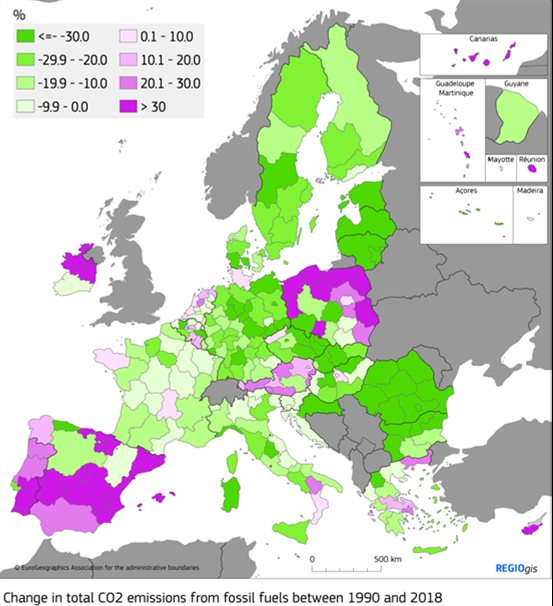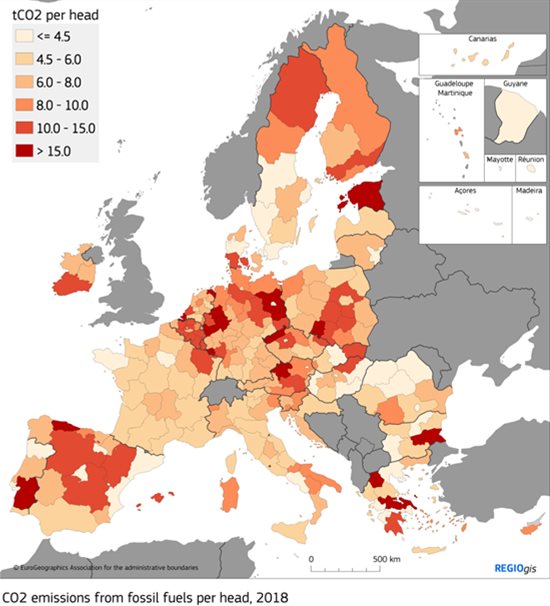The evolution and future of Cohesion Policy

Peter Berkowitz, Director Policy Development and Economic Analysis, at the Directorate-General for Regional and Urban Policy, European Commission
The Treaty on the Functioning of the European Union (Article 174) defines the goal of Cohesion Policy as strengthening economic, social and territorial cohesion by reducing disparities in the level of development between regions.
Cohesion Policy provides support to all EU regions to promote competitiveness, economic growth, job creation and environmental protection and improve quality of life. It is concentrated in less developed regions and countries to help them to catch up with others.
Following enlargements in the early 2000s that increased the scale of disparities and led to an increase in the EU budget for cohesion, the major focus for Cohesion Policy was real economic convergence. However, the economic and financial crisis of 2008 halted this convergence process and led to a rapid increase in labour market disparities. This was particularly notable in low-growth, lagging regions and in an increasing number of stagnating, middle-income regions. This drew attention to the importance of the quality of governance.
Low-quality institutions have been shown to reduce overall economic growth and the impact of Cohesion Policy. As a result, Cohesion Policy began to pay more attention to improving administrative, regulatory and strategic capacity to delivery economic development policies. The need to strengthen links with reforms drew attention to the relationship with broader economic governance.
In the last five years, a new area of concern has been the growing innovation divide. As highlighted in the eighth cohesion report, innovation has become concentrated in more developed regions, while less developed and middle-income regions have become less innovative. This is likely to limit their long-term growth potential. Strengthening innovation diffusion and adoption will be essential to sustain the convergence process in the knowledge economy.

Map from the 8th Cohesion report
The European Green Deal will generate many opportunities for growth, but, if not managed properly, this transition may lead to an increase in regional disparities
Closely linked to this divide is the digital divide. The digital transition tends to happen in the rich urban regions first and in the poor rural ones last. Ensuring that all territories make this transition will require expanding very-high-speed internet access, boosting digital skills and investing in information technology equipment.
The innovation divide reflects a broader trend in which some middle-income regions have become stuck in a development trap; in other words, they experienced long periods of below-average growth in the last two decades. These regions tended to have a less educated labour force, lower levels of research and development, a smaller industrial sector and lower-quality institutions. A key policy issue is, therefore, whether Cohesion Policy needs stronger support from other national and EU policies to be effective in these regions.
As we entered a new decade, longer term issues linked to the green and demographic transitions came to the top of the EU’s agenda. Looking to the future, the green transition will transform our economies and societies. The European Green Deal will generate many opportunities for growth, but, if not managed properly, this transition may lead to an increase in regional disparities. The EU has set up the
Just Transition Fund within Cohesion Policy to alleviate socioeconomic costs triggered by the climate transition, supporting the economic diversification and reconversion of the most-affected territories concerned, and helping people to adapt to a changing labour market.
Demographic change, notably ageing, will affect all regions. Rural regions will be especially affected, as they already have an older and shrinking population. Primary and secondary schools will have to adjust to the lower number of pupils, while other public services and healthcare will need to serve a growing number of older residents. Cohesion Policy is increasingly focused on supporting the adaptation of regions to these challenges.
At the same time, Cohesion Policy has had to react to urgent demands. The COVID-19 pandemic has had a highly uneven impact on European regions. Excess mortality, for example, was substantially higher in less developed regions than elsewhere. The restrictions put in place to slow the spread of the virus led to the biggest post-war recession in the EU, but it affected some regions far more than others. Regions with a large tourism sector experienced greater drops in income. This uneven impact led to the creation of Recovery Assistance for Cohesion and the Territories of Europe (REACT-EU), a rapid crisis response mechanism, within Cohesion Policy.
As highlighted in the eighth cohesion report, innovation has become concentrated in more developed regions, while less developed and middle-income regions have become less innovative
The unprovoked Russian invasion of Ukraine is still ongoing and has led to massive economic damage and untold human suffering. The impacts on EU regions are much smaller, but they are still developing, with a growing number of Ukrainian refugees in the EU. Through Cohesion’s Action for Refugees in Europe and the increased prefinancing levels from REACT-EU in March 2022, Member States can now use funds from the 2014–2020 programmes to help house refugees. However, the long-term integration of refugees, and the necessary adaptations of supply chains and our energy systems, will require solutions over the coming years.
As we have seen, Cohesion Policy has been called on to address a growing range of issues, from economic and social issues to institutions and innovation, linkages with reforms and governance. Some issues are long term, such as convergence and climate change, while others are sharp shocks, including the COVID-19 pandemic and the war in Ukraine. As we look to the future, Cohesion Policy will need to adapt to these long-term structural challenges while strengthening its capacity to respond to new asymmetric shocks.
